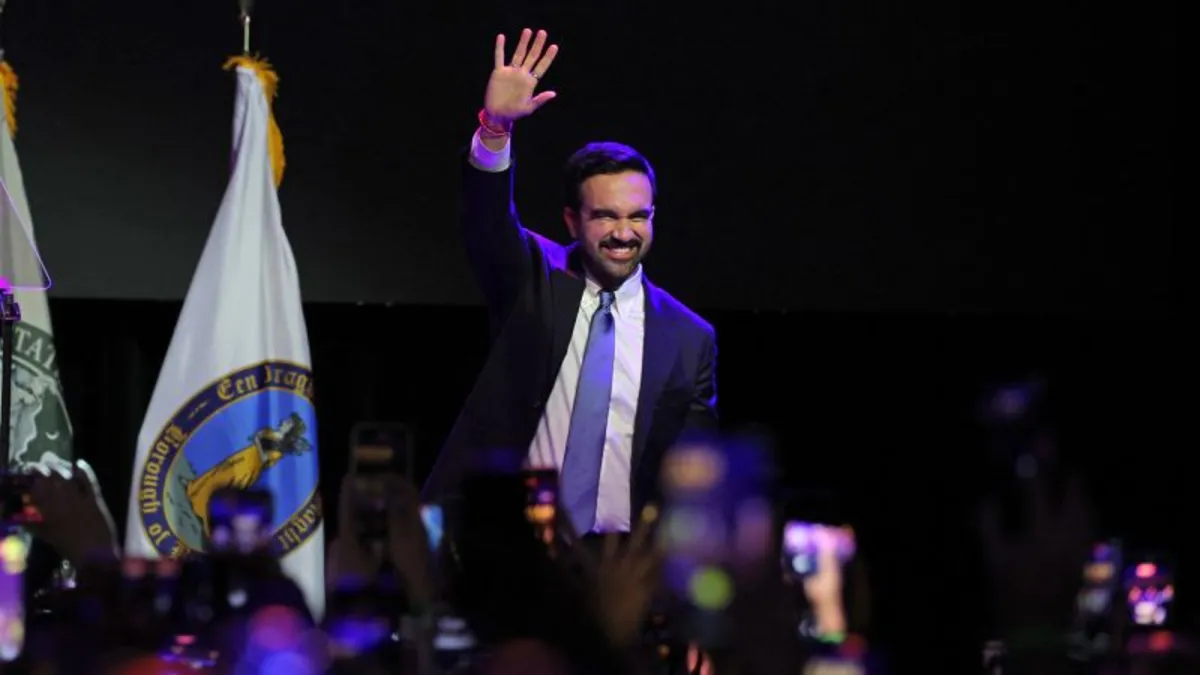
In an era where political discourse is ever-evolving, it is essential for media outlets to periodically assess whether their stories accurately reflect the current political landscape. One poignant moment that encapsulates this need occurred on Tuesday evening when Zohran Mamdani spoke of “the working people of New York,” attributing his victory to their unwavering support. He described these individuals, saying, “Fingers bruised from lifting boxes on the warehouse floor, palms calloused from delivery bike handlebars, knuckles scarred with kitchen burns: These are not hands that have been allowed to hold power.” His words resonated deeply, highlighting the significant disconnect between mainstream media narratives and the lived experiences of everyday citizens.
While I appreciate a lively TV panel discussion, it’s crucial to question whether these programs truly represent the perspectives of people like those Mamdani described. As former political advisor David Axelrod pointed out during a recent CNN panel, “Everyone at this table is going to go home to great comfort.” He emphasized the reality that many individuals in New York City, and across the nation, face daily struggles to meet their financial obligations, stating, “And that is a crisis.” This gap between the political elite and the everyday voter is a challenge that journalists, particularly in television, must continuously strive to bridge.
One of my favorite follow-up pieces was by CNN’s Aditi Sangal, who spent the evening at Kabab King, a well-known biryani spot favored by the mayor-elect. Her reporting provided an authentic glimpse into the sentiments of the community, showcasing the importance of grassroots voices in political coverage.
Just as media outlets made a concerted effort to include Trump-supporting commentators in 2015 and 2016, it is equally vital to seek out voices that represent a new wave of younger, progressive Democratic voters. For instance, The Free Press hosted a live stream on election night featuring Bhaskar Sunkara, president of The Nation magazine and founding editor of the socialist publication Jacobin. Sunkara’s presence reflects a shift towards more diverse political commentary that resonates with the current electorate.
In an essay featured on Jacobin, Eric Blanc articulated the improbability of Mamdani’s victory and cautioned that “turning Zohran’s vision into a reality won’t be easy.” He underscored the powerful opposition Mamdani may face, asserting, “Some of the most powerful people and institutions in the world are going to do everything to stop us.” Yet, Blanc remained optimistic, stating that transformation is possible if “large numbers of everyday New Yorkers join the fight.”
Similarly, editor Katrina vanden Heuvel and executive editor John Nichols from The Nation expressed in an editorial that Mamdani “has no higher responsibility than to be a great mayor of New York City.” They emphasized the potential impact of his leadership on the broader political landscape, asserting that his success could serve as a powerful antidote to the challenges posed by the Trump administration.
Just eight months ago, Mamdani's press conference in Manhattan attracted minimal media attention. Fast forward to now, and he is enveloped by cameras and journalists eager to cover his journey. Mamdani's communications aide, Lekha Sunder, shared side-by-side photos from March and November, captioned, “How far we’ve come,” illustrating the remarkable shift in media focus. According to CNN's Gloria Pazmino, more than 400 press RSVPs were received for his victory celebration, highlighting the growing interest from both national and international media.
Commentators have highlighted Mamdani’s media savvy alongside his consistent messaging. NY1’s Errol Louis remarked that while social media platforms like Instagram and TikTok may play a role, the core of successful political engagement lies in understanding and addressing the concerns of the constituents. This aligns with journalism professor Jay Rosen’s “citizens agenda” concept, which advocates for coverage that truly reflects the priorities of the public.
In New Jersey, the governor’s race was anticipated to be closely contested, particularly with polls indicating a narrow lead for Sherrill over Ciattarelli. The RealClearPolitics average showed Sherrill ahead by just 3.3%. However, she ultimately secured a decisive victory with 56% of the vote compared to Ciattarelli's 42%. Commentators noted that the polls may have overstated support for Ciattarelli, as Sherrill maintained a lead in pre-election surveys.
As key races were called prior to Fox News’ special coverage starting at 10 p.m., viewers witnessed hosts Jesse Watters and Sean Hannity grapple with the implications of the results. Both attempted to frame the outcomes as anything but a rejection of Trump. After noting Abigail Spanberger's victory in Virginia, Watters claimed, “The Democrats are going to spin this: ‘This is a referendum on Trump.’ I mean, these are all blue states.” Hannity echoed similar sentiments, sharing that his phone was inundated with messages from friends feeling “depressed and scared.”
Conservative commentator Sohrab Ahmari argued that the exaggerated nature of the Right’s attacks on Mamdani only served to increase his appeal. Mamdani himself referenced the “prism of misinformation” and hinted at the media dynamics we can expect as the Mamdani-Trump narrative unfolds. He provocatively addressed Trump directly, stating, “Donald Trump, since I know you’re watching, I have four words for you: Turn the volume up.” This bold declaration was broadcasted fully on Fox News, where anchor Trace Gallagher invited Trump to call in immediately afterward, although no response was forthcoming.